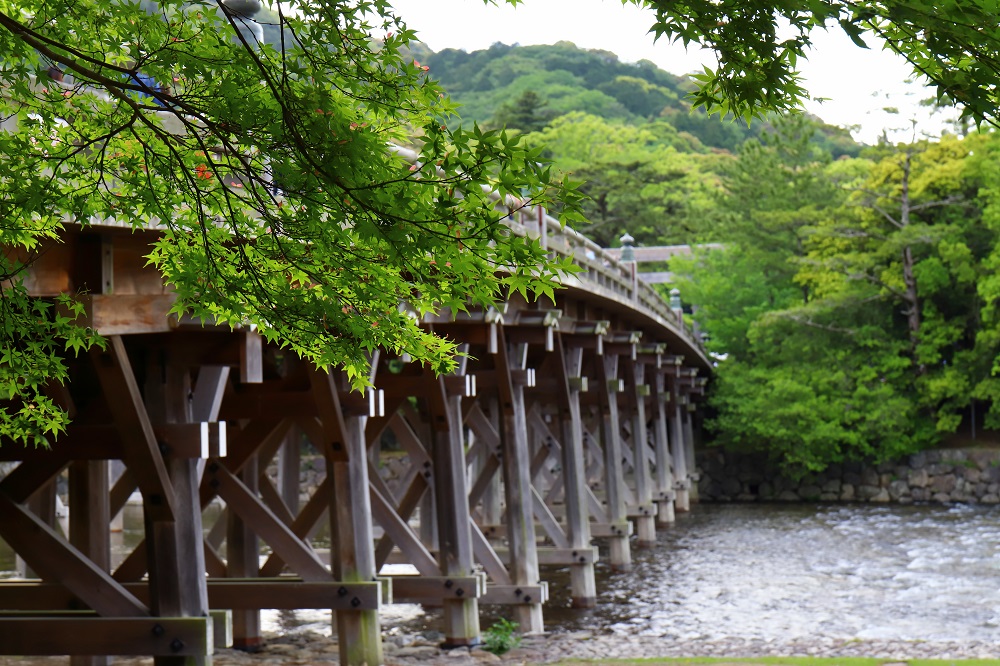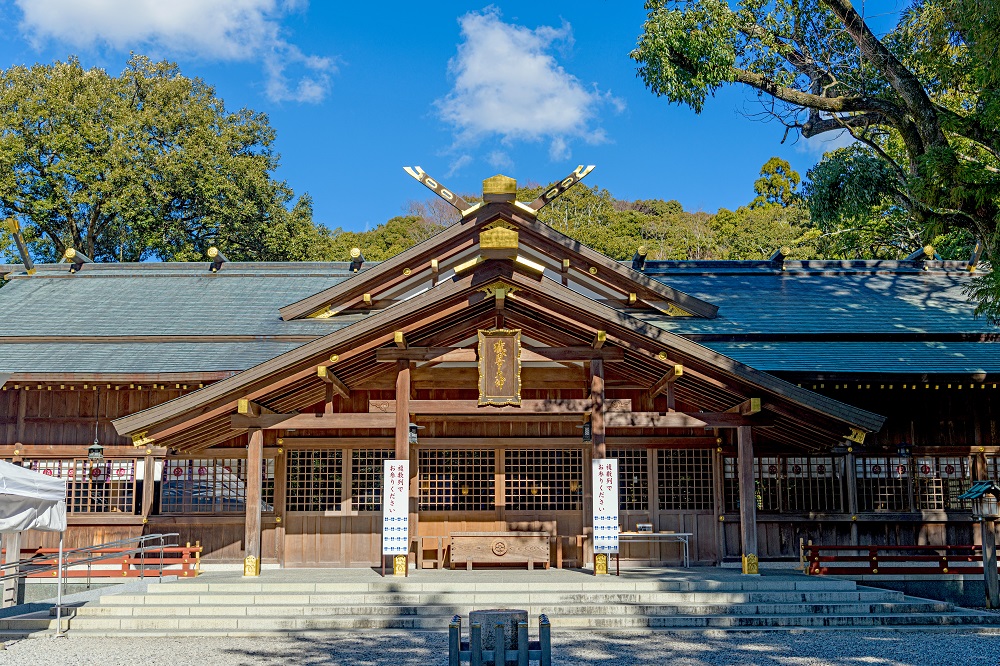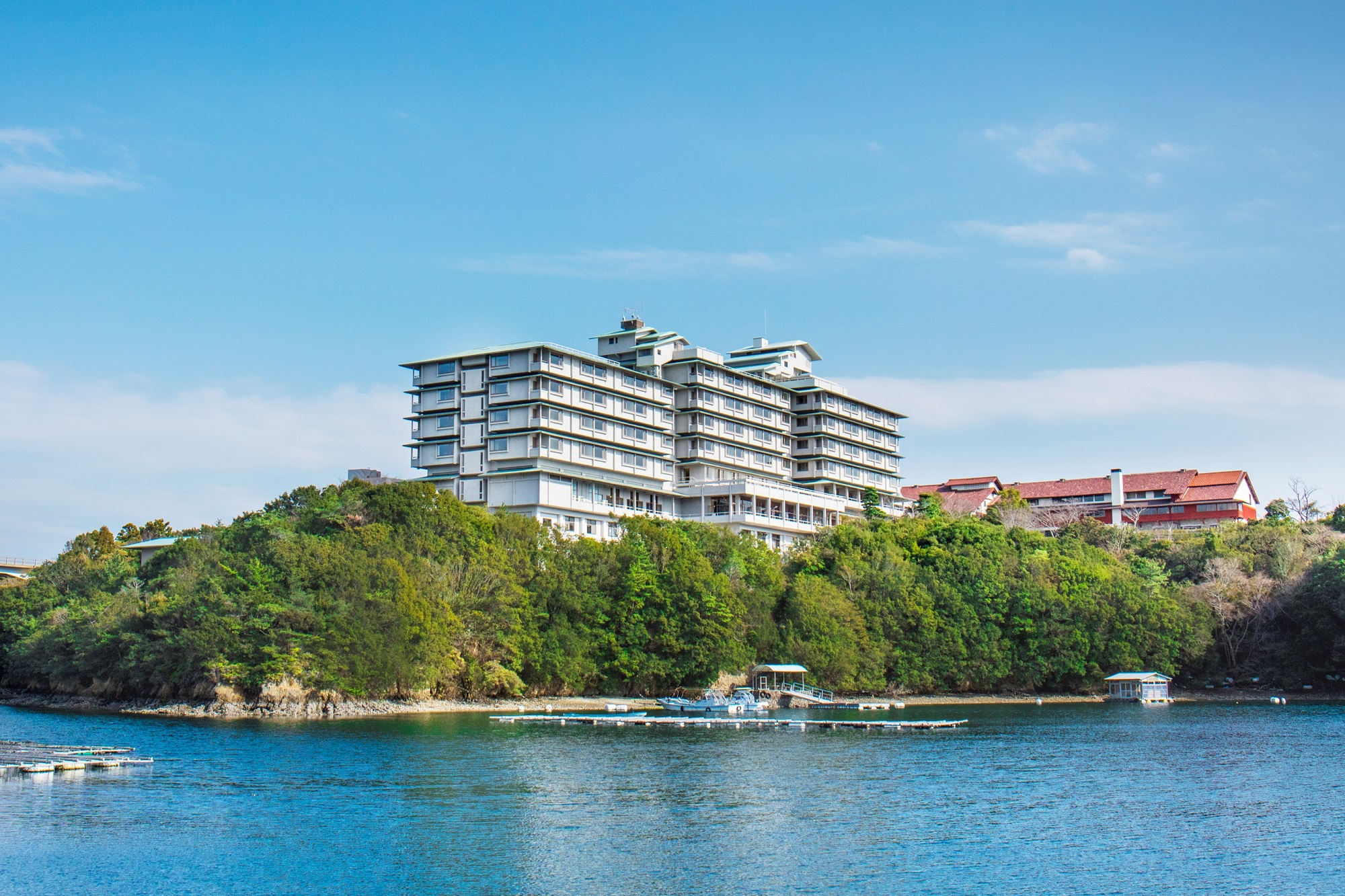Ise Jingu/伊勢神宮(Mie)
About Ise Jingu
During the Edo Period (1600-1868), it became popular for people to partake in “okage mairi” processions, during which large groups of people flocked to worship together at Ise Jingu Shrine. During this time, a folk song called the “Ise Ondo” spread nationwide with the lyrics, “I want to visit Ise. I want to see the Ise Road, at least once before I die,” stirring a great longing among the people for Ise. That admiration and reverence have not abated over time. Even today, many people from all over Japan and the world visit Ise, and the Inner and Outer Shrines together receive approximately 8 million visitors a year.

The Inner Shrine (called the Naiku, but formally known as the Kotai Jingu) has stood on the banks of the Isuzu River since the reign of Emperor Suinin some 2,000 years ago. It enshrines the sun goddess Amaterasu Omikami, who is said to be the ancestor of the Imperial Family and has been revered by the people of Japan as their general guardian deity.
The entrance to the Inner Shrine consists of Uji Bridge. When you cross the bridge and proceed along the long, gravel-covered approach, you will find yourself in the sanctuary, with the original landscape of Japan – called “the home of the heart”– spread out before you.
The Outer Shrine (called the Geku but formally known as the Toyouke Daijingu) enshrines Toyouke Omikami, the deity who both provides food to Amaterasu Omikami in the Inner Shrine, and is revered as the guardian deity of food, clothing, shelter, and industry.
Passing through the Torii gate, visitors are surrounded by greenery and filled with a sense of clarity as they walk along the gravel-covered approach to the shrine.

When visiting a Shinto shrine, there are some proper manners and etiquette that should be observed.
To begin with, it is customary to cleanse the hands and mouth in a ritual called “te-mizu” or “cho-zu,” which literally mean, “hand water.” You wash your hands and rinse your mouth with water in a simplified form of the Shinto purification ritual called “misogi.” The idea is to purify both mind and body so you can feel clear and refreshed when visiting the shrine.
There is a place within the Inner Shrine called the Temizusha, where you can perform the cleansing ritual, but if you go a little further in, you will find the “Mitarashi-ba,” where you can cleanse yourself with water from the Isuzu River.
Upon reaching the shrine itself, you straighten yourself out and throw some money in the collection box. You then bow twice, clap twice, and bow once more. The deep bow performed at a shrine is called a “hai,” and clapping the hands is called “hakushu.” Both the “hai” and “hakushu” are time-honored manners of salutation in Japan. When visiting a shrine, one should do so with a heart of gratitude and a spirit of thanksgiving.

Getting there and around
Train
Take the Kintetsu Limited Express from Nagoya Station to Iseshi Station (approx. 80-90 min.)
Take the JR Rapid train from Nagoya Station to Iseshi Station (approx. 88-106 min.)
Take the Kintetsu Limited Express from Tsuruhashi Station in Osaka to Iseshi Station (approx. 100 min.)
Bus
Take the Mie Kotsu Bus route 51 or 55 from Iseshi Station to Naiku (Inner Shrine) and Geku (Outer Shrine)
Top Tip
Jingu/神宮
Kotai Jingu and Toyouke Daijingu are the main shrines. They are called the “shogu,” while the secondary shrines are the “betsugu.” “Sessha” refers to shrines listed in the Engishiki Jinmyocho (a list of shrines compiled in 927), while “massha” refers to shrines not listed in the Engishiki Jinmyocho but listed in the Enryaku Gishikicho (a document compiled in 804 detailing events, rituals, their origins, shrine jurisdictions, etc.). “Shokansha” are other shrines that bear a relation to the Inner and Outer Shrines.
Ise Jingu is at the center of all Shinto shrines in Japan, and is dedicated to Amaterasu Omikami, the direct ancestor of the Imperial Family and the great ancestor of all Japanese people. It has the largest sanctuary among the approximately 80,000 shrines in Japan and is revered as an exceptional shrine among all the shrines in Japan.

Sarutahikojinja/猿田彦神社
Sarutahiko Shrine is dedicated to the deity Sarutahiko Okami, who led the gods during the Tenson Korin, which was when Ninigi-no-Mikoto, the grandson of the sun goddess Amaterasu Omikami, descended from the heavens to earth at the behest of his grandmother.
Having led Ninigi-no-Mikoto to Mt. Takachiho, Sarutahiko Okami is revered as the god of guidance and is popularly believed to bring the blessings of traffic safety and prosperity for the family business while helping people to avoid the misfortunes that can come from directional bad luck (such as if one builds a house and it is facing in a direction that brings bad luck). The shrine precincts are home to Sarume Shrine, where the ancestral deity of actors, kagura (traditional Shinto music and dancing), handicrafts, and the repose of souls is revered. The shrine is also popular among women seeking a marriage partner.

futamiokitamajinja/二見興玉神社
The deity enshrined at Futami Okitama Shrine is Sarutahiko Okami. Due to his feat of guiding the grandson of the sun goddess from the heavens to earth, he has long been worshiped by many of the faithful as the guardian deity of traffic safety. The shrine is also famous as a place to pray for a good marriage, because it offers a great view of the Meoto Iwa, or “Married Couple Rocks.”
Since ancient times, it has been customary to wash oneself in the Futami-ura sea before visiting the shrine to remove impurities and cleanse the body and soul. Standing in the sea at Futami-ura are two rocks – one large and one smaller – bound together by a thick shimenawa sacred rope. These rocks have become famous as symbols of marriage because of the way they look like a happy couple standing together. From May to July, you will be able to see the morning sun rising between the Married Couple Rocks, and from November to January, when the moon is full, you can see the rising moon.

Information
Language: English, Chinese, Korean, French, German and Italian
https://www.isejingu.or.jp/en/map/index.html
Travel Advice and Tips
The best time to visit Ise Jingu Shrine is in the early morning. The fresh air and silence of the early hours and the small number of visitors make for a more solemn atmosphere.
On Oharai-machi Street, the old approach to the Inner Shrine, you can find Akafuku Honten, a shop that sells Ise’s famous Akafuku rice cakes, which can be enjoyed in the shop's tatami room as you take in the view of the Isuzu River.
Accommodations
Shima Kanko Hotel/志摩観光ホテル(Mie)
731 Shinmei Ago-cho Shima-shi, Mie
Shima Kanko Hotel is an elegant hotel built on a hilltop overlooking a peaceful inlet in Ise-Shima, a special place chosen by the Shinto gods 2,000 years ago. Designed by Murano Togo, one of Japan's leading architects, the hotel has welcomed distingu....

